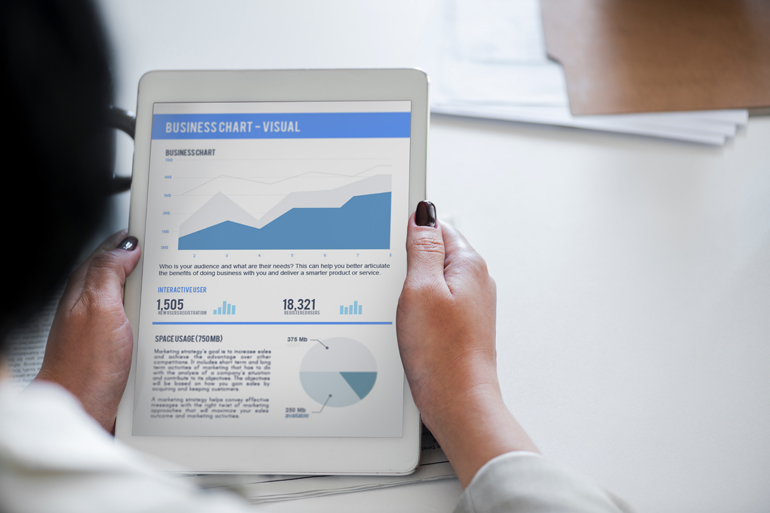 Marketing without analytics is unthinkable today since analytics are the nexus between processes and technologies that enable marketers to evaluate the success of their marketing initiatives, providing invaluable assistance in driving marketing efforts forward.
Marketing without analytics is unthinkable today since analytics are the nexus between processes and technologies that enable marketers to evaluate the success of their marketing initiatives, providing invaluable assistance in driving marketing efforts forward.
Since businesses expanded into new marketing categories over time, new technologies were adopted to support them, however, typically deployed in isolation, creating “data silos”, disconnected data environments. Marketing analytics, however, must consider all marketing efforts across all channels over a span of time to be able to make faultless decisions and execute marketing campaigns efficiently. It means, businesses must stop using unstructured and barely networked analysis – at least descriptive analysis that serve to evaluate a well-defined perspective on a particular question at a given time.
Descriptive analytics is a preliminary stage of data processing that creates a summary of historical data to yield useful information and possibly prepare the data for further analysis. But there are numerous analysis options that at the same time simplify the processes and make marketing more efficient.
Predictive analytics: What could happen (in the future)?
Predictive analytics is an area of statistics that deals with extracting information from data and using it to predict trends and behavior patterns.
Generally, the term predictive analytics is used to mean predictive modeling, "scoring" data with predictive models, and forecasting. However, people are increasingly using the term to refer to related analytical disciplines, such as descriptive modeling and decision modeling or optimization. These disciplines also involve rigorous data analysis and are widely used in business for segmentation and decision-making, although the statistical techniques underlying them vary.
A study by Experian shows that 66% of marketing professionals embark on the adventure of business intelligence technology that predicts a score for a customer or other elements. Assigning such ratings is the task of a predictive model, which in turn is built and refined by your data and reflects the knowledge and experience of your organization. Predictive analytics streamline marketing campaigns and the visitor experience on web pages to increase the number of customer inquiries, dialogues and clicks, at the same time reducing the loss of customers.
The scores for all customers show the company which measures must be taken, and which actions will ensure better satisfaction in real-time. So, you can use algorithms based on countless criteria segmentation - for example, in terms of behavior - and determine the purchasing behavior of customers. Segmentation may also be based on the type of product being purchased or on the brands that could appeal to the customer. You can also analyze the geographic zones of your distribution network as needed to optimize the potential of each location.
Predictive analytics simply calculates the consumer preferences: How much do your customers spend on your offers over time? Which customers are likely to respond to your offers, depending on the content? At what point does a potential customer make his/her first purchase? And when is the next purchase to be expected from existing customers?
Prescriptive analytics: How should we respond (to those potential future events)?
Prescriptive analytics entails the application of mathematical and computational sciences, and suggests decision options to take advantage of the results of descriptive and predictive analytics. That’s why it is referred to as the "final frontier of analytic capabilities. And if you go into the prescriptive phase not just with predictions, but with advanced analytics, that's even better. Using prescriptive analytics algorithms allows your company to provide recommendations to customers based on the information in their profile, considering the context of your industry (current product portfolio, inventory, profit margin, etc.).
To implement recommendations, you can e.g. suggest a new product to replace a previously purchased product or offer a package with multiple products at a reduced price. That way you get an additional buy (up-sell), or you make offers that could interest your customers according to their purchase history. If you show frequently purchased products, you increase the likelihood that cross-selling opportunities will be noticed.
Prescriptive Analytics is the final leg of your advanced analytics strategy. With this, and with your data and marketing materials, you can finally clearly define what to do to achieve your goals or predict your customers' shopping experience. With a “Thank you”- page or a confirmation mail after the purchase, you can promote another offer (next sell recommendation).
In fact, prescriptive analytics not only anticipates what will happen and when it will happen, but also why it will happen, and suggests decision options on how to take advantage of a future opportunity or mitigate a future risk and shows the implication of each decision option.
Of course, prescriptive analytics can continually take in new data to re-predict and re-prescribe, thus automatically improving prediction accuracy and prescribing better decision options, and ingests hybrid data - a combination of structured (numbers, categories) and unstructured data (videos, images, sounds, texts), as well as business rules to predict what lies ahead and to prescribe how to take advantage of this predicted future without compromising other priorities.
If you do not yet see the value of using a more complex approach to performance, look at some success stories, where some companies reportedly have seen increases of up to 30% in CTR and 20% in engagement when using advanced analytics, but let me tell you that limited analysis capabilities are a thing of the past, as all tools are now interconnected.
By Daniela La Marca


